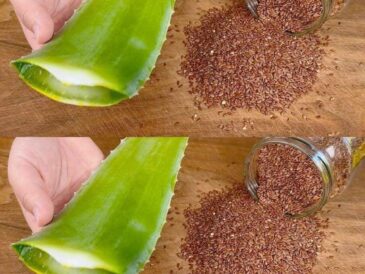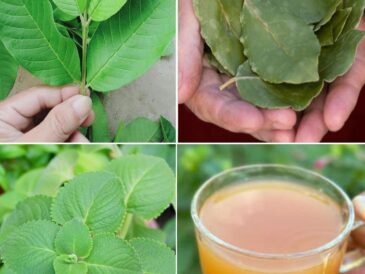Introduction: The Timeless Allure of Seafood Paella
Seafood paella is one of Spain’s most celebrated culinary treasures, renowned worldwide for its vibrant colors, rich flavors, and communal spirit. It perfectly blends land and sea, showcasing fresh seafood and the earthy goodness of saffron-infused rice cooked to tender perfection. This dish is more than just a meal; it’s a cultural experience, a symbol of togetherness, and a celebration of Spain’s Mediterranean bounty.
Whether you’re a seasoned cook or a curious foodie, understanding how to prepare seafood paella and appreciating its heritage adds an enriching layer to enjoying this dish. This article explores every facet: from the choice of ingredients and step-by-step cooking techniques to the dish’s history, variations, nutritional aspects, and how to serve it for maximum enjoyment.
1. The Origins and Cultural Significance of Paella
1.1 History of Paella: From Humble Beginnings to Global Fame
Paella originated in the region of Valencia on Spain’s east coast, initially a rural peasant dish cooked over an open fire by farmers and laborers. The name “paella” derives from the Old French word paelle, meaning pan, referring to the wide, shallow pan used to cook it.
Originally, the dish was made with local ingredients readily available: rabbit, chicken, snails, and seasonal vegetables. The advent of seafood paella came later, particularly in coastal regions where fishermen adapted the recipe to incorporate their fresh catch of the day — shrimp, mussels, clams, and calamari.
Today, paella is a symbol of Spanish gastronomy, celebrated in festivals and enjoyed in homes and restaurants globally. Seafood paella, in particular, is beloved for its vibrant flavors and festive nature, often served at family gatherings and celebrations.
1.2 The Paella Pan: More Than Just a Cooking Vessel
The traditional paella pan is a wide, shallow, round pan with sloping sides made from carbon steel or stainless steel. Its unique design facilitates even heat distribution and the formation of the coveted socarrat — the crispy, caramelized rice crust at the bottom, considered the hallmark of a perfect paella.
Although modern cookware can be used, the paella pan’s characteristics contribute to authentic texture and flavor, making it a worthwhile investment for enthusiasts.
2. Ingredients: The Building Blocks of Flavor and Texture
2.1 Short-Grain Rice: The Heart of Paella
Paella calls for short-grain rice varieties such as Bomba, Calasparra, or Valencia rice. These varieties absorb liquid well without becoming mushy, yielding a creamy yet firm texture. Their ability to soak up flavors while maintaining individual grain integrity is essential for authentic paella.
2.2 Seafood: Freshness and Variety
A quintessential seafood paella includes a medley of shrimp, mussels, and calamari. The shrimp provide sweetness and texture, the mussels bring briny, oceanic depth, and calamari adds chewiness and subtle flavor. Freshness is paramount — fresh seafood ensures a vibrant, delicate taste and safe consumption.
2.3 Aromatics and Vegetables
Onion, garlic, and bell pepper form the aromatic base, sautéed to release sweetness and complexity. Green peas add a pop of color and slight sweetness, balancing the savory seafood and smoky paprika.
2.4 Spices and Broth
- Smoked paprika imparts warmth and subtle smokiness, key to the dish’s distinctive flavor.
- Saffron threads are indispensable, lending a golden hue and unique aroma that elevates paella beyond mere rice and seafood.
- Seafood broth made from fish bones, shells, or quality store-bought stock enriches the rice with ocean flavors.
2.5 Olive Oil, Salt, and Pepper
Good-quality olive oil is fundamental for sautéing and flavor. Salt and pepper are used judiciously to season without overpowering the delicate seafood.
3. Step-by-Step Preparation: Crafting the Perfect Seafood Paella
3.1 Step 1: Sauté the Aromatics
Start by heating olive oil in a large paella pan or wide skillet over medium heat. Add finely chopped onion and diced bell pepper. Sauté for about 5 minutes until softened and fragrant. This step develops a sweet and savory base essential for layering flavors.
3.2 Step 2: Introduce Garlic and Spices
Stir in minced garlic and smoked paprika, cooking for an additional minute to release their aromas. Smoked paprika’s depth melds beautifully with the garlic, forming the backbone of the paella’s flavor.
3.3 Step 3: Toast the Rice with Saffron
Add the short-grain rice, stirring constantly to coat each grain with oil and spices. Add saffron threads at this stage to infuse their vibrant color and subtle bitterness directly into the rice. Toasting the rice briefly enhances its nutty flavor and improves texture.
3.4 Step 4: Add Broth and Simmer
Pour in the seafood broth, season with salt and pepper, and bring the mixture to a simmer. Once simmering, reduce heat to low and cover loosely. This gentle cooking allows the rice to absorb the broth gradually, softening without becoming mushy.
Avoid stirring during this period; stirring breaks the grains and prevents the socarrat from forming.
3.5 Step 5: Add Seafood and Peas
After 15 minutes, arrange the mixed seafood and green peas over the rice. Cover again and cook for an additional 5-7 minutes until the seafood is cooked through and tender.
Shrimp will turn pink and firm, mussels will open, and calamari will become tender yet chewy — indicators that the dish is near completion.
3.6 Step 6: Rest and Serve
Remove the pan from heat and let the paella rest covered for 5 minutes. This resting period allows residual heat to finish cooking and flavors to meld.
Serve the paella with fresh lemon wedges, which guests can squeeze over their portions for a zesty brightness that complements the rich flavors.
4. The Art and Science Behind Perfect Paella
4.1 The Role of Rice Absorption and Texture
Short-grain rice varieties absorb liquid up to three times their volume, which is crucial for flavor infusion and achieving the correct creamy yet firm bite.
Overcooked rice becomes mushy; undercooked rice is hard. Mastery comes with experience and attention to broth ratios and cooking times.
4.2 The Magic of Socarrat
The socarrat is the prized caramelized crust formed at the bottom of the pan. It offers a toasty, slightly nutty flavor and crunchy texture that contrasts beautifully with the tender rice and succulent seafood.
Achieving socarrat requires cooking uncovered at the end of the process and not stirring the rice, allowing the bottom to dry and brown.
4.3 Saffron: The Golden Thread of Flavor
Saffron is the most expensive spice by weight but essential for authentic paella. It contributes a subtle floral, honey-like aroma and imparts the signature golden color.
When using saffron threads, gently toast and steep them in warm broth before adding, maximizing their flavor extraction.
5. Variations and Adaptations
5.1 Mixed Paella: Land and Sea
Some recipes combine seafood with chicken, rabbit, or chorizo, creating a mixed paella that highlights both land and sea flavors.
5.2 Vegetarian Paella
Vegetables such as artichokes, mushrooms, and tomatoes replace seafood for a vibrant vegetarian option, still featuring the core saffron rice and smoky paprika.
5.3 Regional Twists
Across Spain, regional adaptations vary ingredients and techniques, reflecting local produce and traditions.
6. Nutritional Information and Health Benefits
Seafood paella offers a balanced nutritional profile:
- Protein: Seafood and rice provide lean protein, essential for muscle repair and overall health.
- Carbohydrates: Rice is the primary energy source, delivering complex carbs for sustained energy.
- Micronutrients: Saffron, garlic, and bell peppers offer antioxidants and vitamins.
- Healthy fats: Olive oil contributes monounsaturated fats beneficial for heart health.
Paella is naturally gluten-free, making it accessible for many dietary needs.
7. Serving Suggestions: Complete Your Meal
7.1 Accompaniments
- Garlic bread complements the paella, perfect for soaking up any remaining broth.
- A mixed green salad with vinaigrette adds freshness and balance.
- Pair with crisp white wine such as Albariño or Verdejo for a traditional Spanish dining experience.
7.2 Presentation Tips
Serve paella straight from the pan at the table to enhance the communal atmosphere. Garnish with lemon wedges and fresh parsley for color and brightness.
8. Troubleshooting Common Paella Challenges
- Rice too watery: Reduce broth next time or increase cooking time uncovered.
- Seafood overcooked: Add seafood later in cooking and avoid high heat.
- No socarrat: Increase heat slightly at the end, but watch closely to avoid burning.
Conclusion: Bringing the Spirit of Spain to Your Table
Seafood paella is an extraordinary dish that combines culinary technique, cultural history, and the pure joy of sharing good food. With practice and quality ingredients, anyone can master this vibrant dish, impress guests, and savor a true taste of the Mediterranean.
Whether enjoyed in a Spanish coastal town or your own kitchen, seafood paella invites you to slow down, connect, and celebrate the bounty of the sea.
Ready to start cooking? Grab your paella pan, fresh seafood, and saffron, and embark on a delicious journey into Spanish gastr
onomy!
If you want, I can also provide a printable recipe card, wine pairing recommendations, or even cooking video links. Just let me know!




